There’s a common belief that if the number near the Wi-Fi standards increases, customer experience will naturally improve, and ISP support teams will see immediate reductions in their workload. While newer Wi-Fi generations do offer better performance, simply upgrading to a modem with a higher Wi-Fi standard does not guarantee a flawless in-home Wi-Fi experience. This is because CPEs come in all shapes and sizes and price points, leading to performance variability—even within the same vendor’s offerings. Furthermore, the perfect CPE and firmware do not yet exist, well at least based on field data.
With many ISPs now evaluating their Wi-Fi 7 device strategies, let’s take a closer look at the Wi-Fi issues that persist in Wi-Fi 6 devices, so we can set more realistic expectations moving forward.
The Inevitable Wi-Fi Problems
Despite significant advancements in Wi-Fi 6 CPEs, some issues, such as coverage and congestion, remain unavoidable with the current technology.
The Hidden Trade-Off: Higher Speeds vs. Coverage in Wi-Fi 6
With Wi-Fi 6, the industry has shifted toward 160 MHz bandwidth for higher speeds, replacing the good old 80 MHz option. However, this comes at a cost—reduced Wi-Fi coverage.
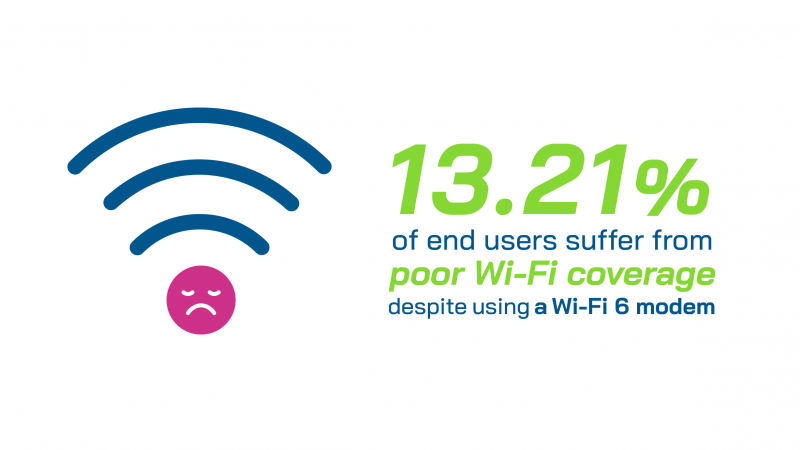 While Wi-Fi 6 offers significant improvements over earlier generations, field data shows that 13.21% of end users still experience poor Wi-Fi coverage despite using a Wi-Fi 6 modem. Additionally, 3.31% of users face severe coverage issues, making them detractors, with this rate rising to 8.71% in certain regions depending on housing types.
While Wi-Fi 6 offers significant improvements over earlier generations, field data shows that 13.21% of end users still experience poor Wi-Fi coverage despite using a Wi-Fi 6 modem. Additionally, 3.31% of users face severe coverage issues, making them detractors, with this rate rising to 8.71% in certain regions depending on housing types.
Customer satisfaction surveys consistently highlight Wi-Fi coverage as a leading concern. Addressing these issues is crucial to ensuring users fully benefit from their Wi-Fi 6 devices.
If Wi-Fi 6 technology is not properly supported by a well-functioning mesh system, the expected high speeds may never be realized. In fact, without proper reinforcement, speeds can sometimes drop below those of Wi-Fi 5 under stable coverage conditions thanks to lower bandwidth.
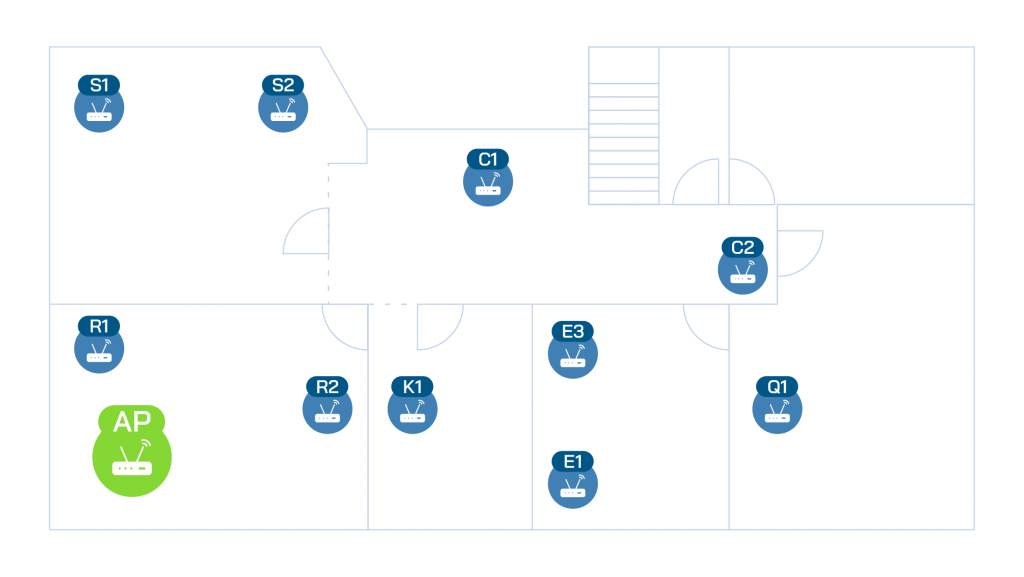

Read more about the epic rivalry between 80 MHz and 160 MHz in coverage terms in our technical blogpost!
Still on 2.4 GHz with Wi-Fi 6
The time spent on the 2.4 GHz band in single SSID mode is a key indicator of a CPE’s band steering efficiency. On average, clients connected to Wi-Fi 6 devices spend up to 36.43% of their time on 2.4 GHz, a figure that can be reduced to 29% with targeted firmware improvements.
However, without a well-reinforced mesh system, poor coverage in Wi-Fi 6 environments can lead to even more clients being steered to 2.4 GHz, further limiting their speed and performance. This issue becomes especially problematic in larger homes or environments with signal obstacles, where Wi-Fi 5, despite being an older standard, may have provided more stable speeds due to better 5 GHz coverage.
For Wi-Fi 6 to deliver on its promises, coverage and steering mechanisms must be analyzed, diagnosed, and optimized with proper tooling — otherwise, users may find themselves locked into slower bands, negating the benefits of their upgraded devices.
When High Usage Meets Bottleneck: The 2.4 GHz Congestion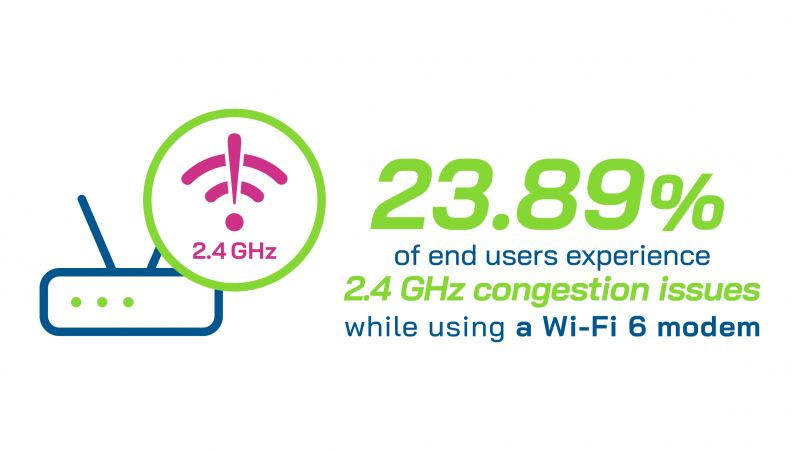
Increased usage of the 2.4 GHz band contributes to congestion, resulting in even slower speeds for devices operating on this frequency band. 23.89% of end users experience 2.4 GHz congestion issues while actively using a Wi-Fi 6 modem, a figure that rises to 37.70% in densely populated urban areas.
High 2.4 GHz usage, combined with congestion, significantly degrades performance and user satisfaction, highlighting a persistent challenge for ISPs in Wi-Fi 6.
The Growing Challenge of 5 GHz Congestion
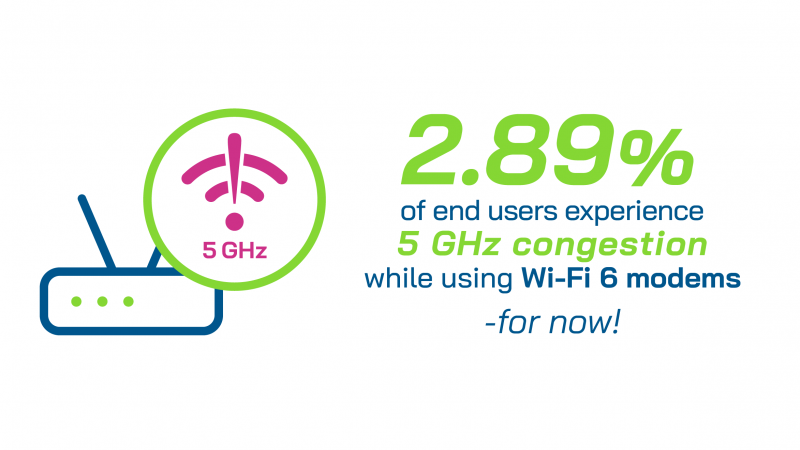
Although less common, 5 GHz congestion is increasing as more modems and client devices with higher Wi-Fi generations enter the market. Currently, 2.89% of end users experience 5 GHz congestion while using Wi-Fi 6 modems—a number expected to rise in the future.
The Inevitable Human Factor
Some Wi-Fi issues cannot be avoided, even with a best-in-class modem, due to the decisions or actions of end-users.
Price of Split SSID in Wi-Fi 6: 22.57% More Time at 2.4 GHz
29.59% of Wi-Fi 6 devices operate in split SSID mode. In this configuration, Wi-Fi 6 users spend 59.00% of their time on 2.4 GHz, compared to just 36.43% in single SSID mode.
This suggests that many end users are unsure which SSID to connect to when using split SSID mode. As customer expectations rise with each new Wi-Fi generation, excessive time on 2.4 GHz leads to greater dissatisfaction, undermining the performance benefits of Wi-Fi 6 devices.
Placement Matters: Optimizing Modem and Mesh Performance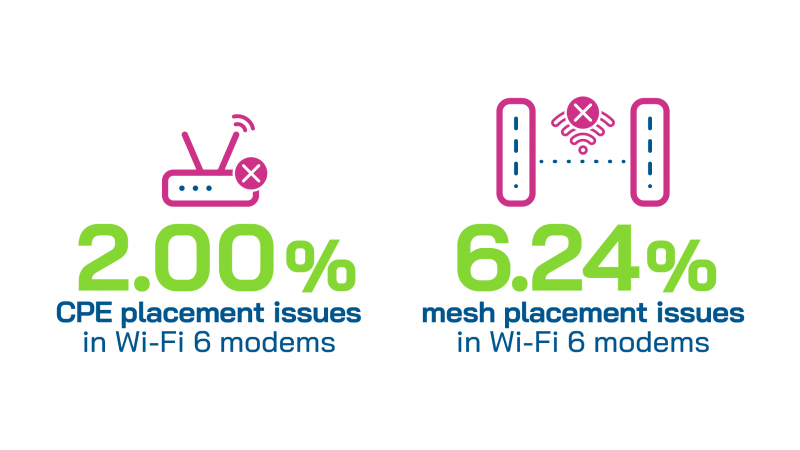
Poor CPE placement occurs when modems are positioned near reflective surfaces, inside signal-blocking furniture, or in rooms with minimal Wi-Fi usage—leading to suboptimal performance. 2.00% of Wi-Fi 6 modems suffer from poor placement, demonstrating that even with the latest CPE models, end-user actions can degrade Wi-Fi quality.
Ineffective mesh setups occur when nodes are placed either too far apart or too close together, reducing the effectiveness of both gateways and mesh extenders. 6.24% of Wi-Fi 6 mesh homes experience placement issues, leading to poor backhaul speeds that hinder modem performance.
Placement problems prevent users from fully utilizing the performance benefits of Wi-Fi 6, limiting the seamless connectivity these systems are designed to provide.
The Blind Spot for ISPs: Retail Repeaters
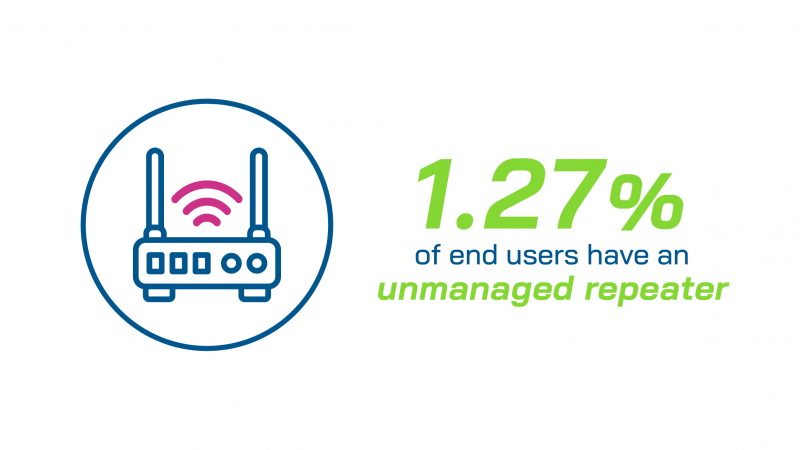
Retail repeaters are a common fallback solution when ISPs fail to identify or address an end user’s coverage issues effectively. However, these repeaters typically lack mesh capabilities, offering only short-term coverage improvements while ultimately degrading the overall user experience. This is because they either rely on 2.4 GHz backhaul to Wi-Fi 6 modems or 5 GHz backhaul with low data rates.
Adding to the challenge, ISPs have no visibility into what happens behind the closed doors of these retail repeaters, making it difficult to diagnose the actual Wi-Fi problems end users face.
Currently, 1.27% of Wi-Fi 6 modem users have an unmanaged repeater installed, preventing them from fully leveraging the performance and benefits of their Wi-Fi 6 device.
Identifying the True Bottlenecks: Client Issues
In some cases, end users may experience poor performance despite having no significant Wi-Fi issues at home, making it essential to identify the true root cause: the clients.
One example of this phenomenon is legacy clients—devices using outdated Wi-Fi technologies that cannot deliver optimal performance, even when paired with top-tier modems. Field data shows that 1.08% of Wi-Fi 6 CPE users have such legacy clients. Identifying these devices is crucial for ISPs to demonstrate that performance issues are not caused by their services.
Another issue arises from high-bandwidth-consuming clients, which can degrade the experience for other devices on the same network. 0.73% of Wi-Fi 6 devices have at least one such client connected. Detecting these clients helps ISPs address congestion issues caused by end-user behavior.
How to Address the Persisting Wi-Fi Issues?
The persisting Wi-Fi problems—such as poor coverage, excessive 2.4 GHz usage, and congestion—demonstrate that simply providing the latest CPEs to end users does not guarantee the best Wi-Fi experience. Additionally, human factors—such as CPE configuration changes, suboptimal placement, and client device limitations—continue to play a crucial role in Wi-Fi performance.
However, this blog post is not about dismissing Wi-Fi 6, 7, or any new technology on the horizon in favor of older technologies. On the contrary, it highlights the importance of analytics-driven optimization to ensure that new Wi-Fi technologies deliver their full potential. Without a proper Wi-Fi analytics tool, ISPs and support teams are left guessing when diagnosing customer complaints, leading to inefficient troubleshooting and unresolved issues.
With real-time monitoring and data-driven insights, support centers can identify and resolve Wi-Fi issues more effectively, while network teams can evaluate Wi-Fi 6 device performance across their customer base. This allows ISPs to proactively collaborate with vendors on firmware improvements, coverage optimizations, and better band-steering strategies, ensuring that the latest Wi-Fi technologies truly enhance the user experience.
Is the Perfect CPE on the Horizon?

Will there ever be a day when ISPs can simply give end users a box that guarantees no Wi-Fi problems at all? The answer is both yes and no. It won’t be possible to offer such a perfect solution due to the human factors mentioned earlier, which cannot be fully eliminated.
However, a brighter future is on the horizon with smart Wi-Fi optimization. Solutions are already available that consistently analyze end-user data, make intelligent adjustments to Wi-Fi settings, such as changing channels or bandwidths, and even fine-tune CPE band steering parameters. While there is still much work to be done, a future where an end user’s Wi-Fi experience is seamlessly optimized based on their specific performance data is becoming increasingly achievable.
About the Authors:
 Eylül Naz Ünsal
Eylül Naz Ünsal
Customer Success Manager
eylul.unsal@lifemote.com



